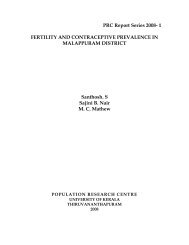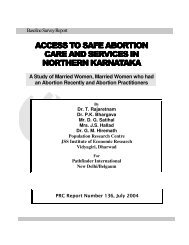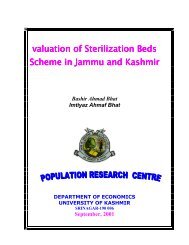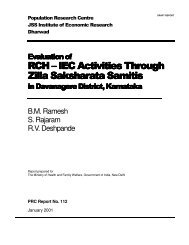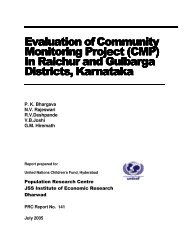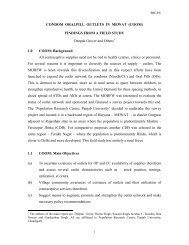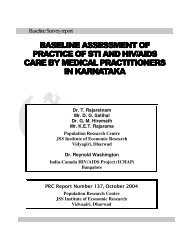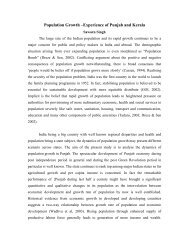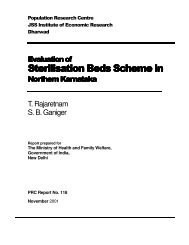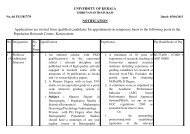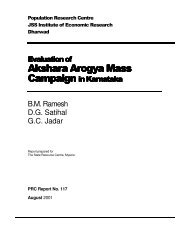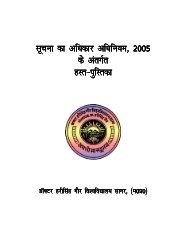Bellary District, - PRC
Bellary District, - PRC
Bellary District, - PRC
- No tags were found...
You also want an ePaper? Increase the reach of your titles
YUMPU automatically turns print PDFs into web optimized ePapers that Google loves.
children who had received the first dose of DPT did not continue toreceive its third dose, and 28 per cent of those who had receivedthe first dose of polio vaccine did not receive the third dose. Amore severe problem seems to be related to the completion ofmeasles vaccination. Forty-six per cent of those who received BCGvaccination did not receive measles vaccination, and 37 per cent ofthose who received the first dose of DPT did not receive themeasles vaccine. It may be noted that in the state as a whole thedrop out rate between specific vaccinations is half or less than halfof that in the district (MICS 2000).Immunisation drop out ratesVaccineDPT1 to DPT3Polio 1 to Polio 3DPT1 to MeaslesBCG to MeaslesPer cent25283746In the MICS, all children below age 5 years, irrespective ofwhether they were reported to have received BCG vaccination,were checked for BCG scar on the left shoulder. Among childrenbelow age 2 years who were reported to have received BCGvaccination, a BCG scar was present in only 78 per cent of thecases. Among children aged 24- 59 months, for whom informationon BCG vaccination was not obtained, BCG scar was noticed inonly 51 per cent of the cases.Vitamin A supplementationFifty-three per cent of children aged 12-23 months have notreceived Vitamin A prophylaxis (54 per cent females and 51 percent males), when they were aged 9-12 months. This proportion inthe state as a whole is 65 per cent (MICS 2000). Only 38 per centreceived Vitamin A supplement along with measles vaccine, and 4per cent have received it at other times. Thirty-five per cent ofchildren are reported to have consumed fruits and vegetables richin Vitamin A during the three days before the survey.Child morbidity and treatment patternDuring the two weeks preceding the survey, 14 per cent of childrenbelow age 5 years had diarrhoea, one-fourth had cough (10 per centhad cough with rapid breathing, 4 per cent had cough with chest indrawing,and 4 per cent had cough with both symptoms), and 25per cent had fever. Overall, 40 per cent of children had experiencedany of these three morbidity conditions during the two weeks priorto the survey, and this proportion is highest among youngerchildren, particularly among children aged 6- 23 months. • * /## 4 4 "## • C D 8 AB A• . B E D 8 38 F 8 8 < 4 9. 6+ , - ./%%7:7



